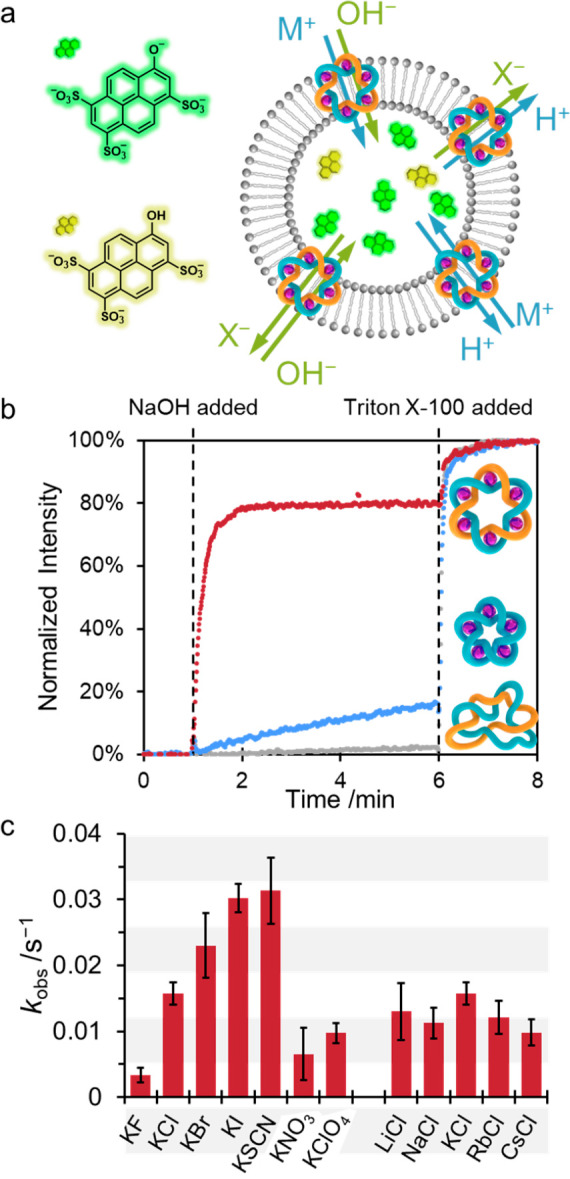Figure 1.

(a) Schematic representation of the 8-hydroxypyrene-1,3,6-trisulfonate (HPTS) assay used to determine the ionophoric activity of 2 and 3 in vesicles; internal pH change can occur through any combination of antiport (M+/H+, A–/OH–) or symport (M+/OH–, A–/H+), as shown.13 (b) Normalized fluorescence data for HPTS assays with EYPC/cholesterol vesicles formed in the presence of KBr, following the addition of (FeII)5-coordinated pentafoil knot 2 (blue), (FeII)6-coordinated Star of David link 3 (red), or demetalated Star of David link 4 (gray). NaOH base pulse (13 μL, 1 M) at 1 min, Triton X-100 (20 μL, 10% v/v solution) at 6 min (EYPC/cholesterol 4:1 v/v vesicles, [compound] = 2.5 μM, 100 mM KBr 20 mM 3-(N-morpholino)propanesulfonic acid (MOPS), pH 7.4). (c) Observed pseudo-first-order rate constants determined from HPTS assays for the transport of different salts ([3] = 2.5 μM, 100 mM MX (M = Li+, Na+, K+, Rb+, Cs+, X = F–, Cl–, Br–, I–, SCN–, NO3–, ClO4–), 20 mM MOPS, pH 7.4). The background rate was high for the small, basic F– anion; nonetheless, it showed a low transport rate (<0.005 s–1) when this background rate was accounted for.
